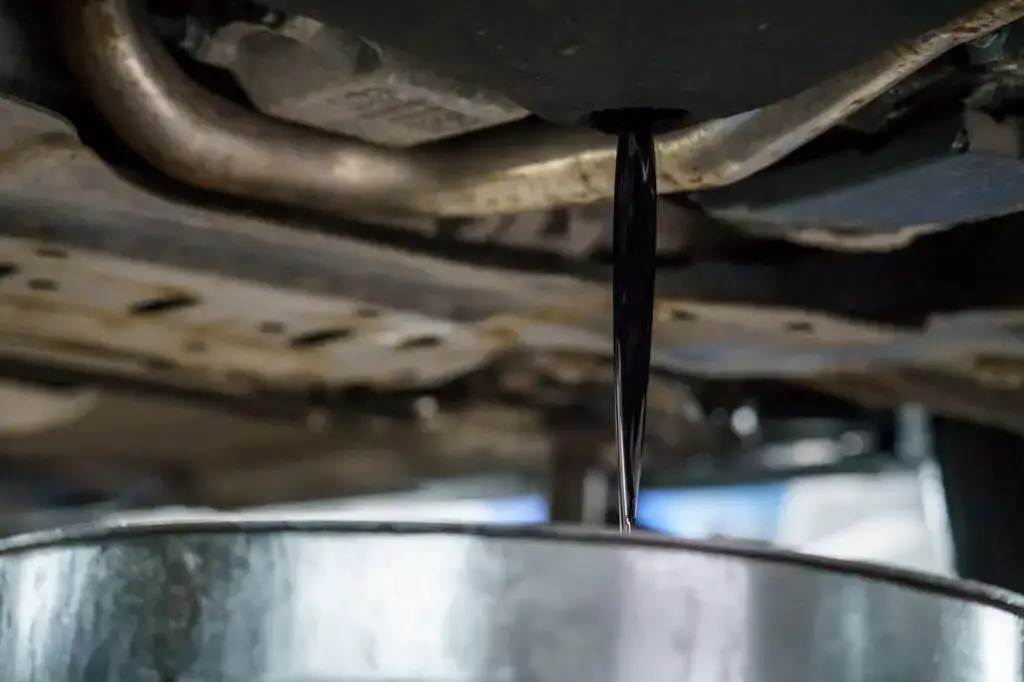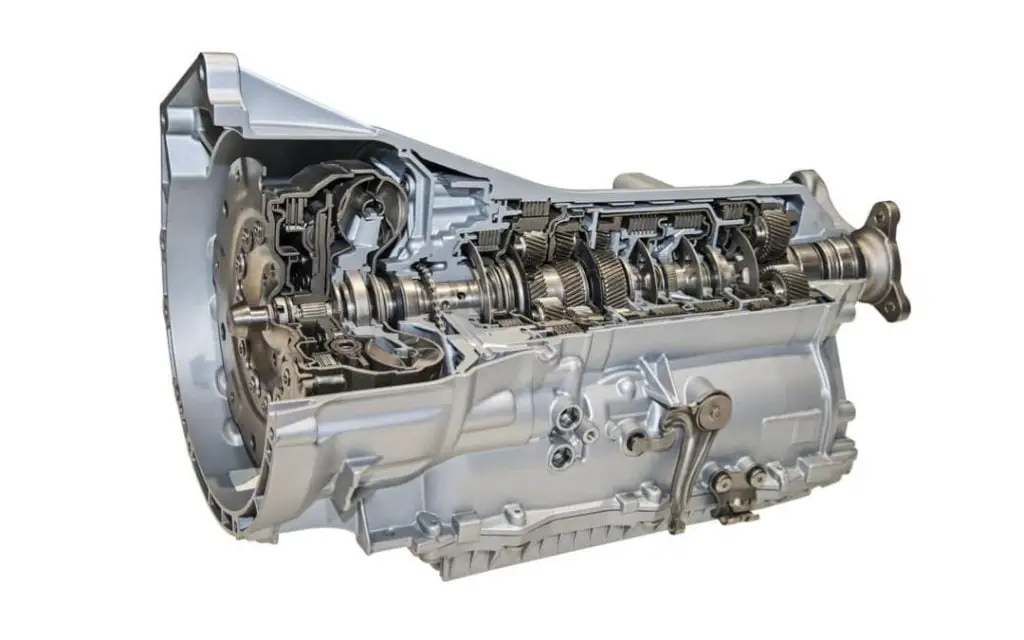


Changing transmission fluid is an important maintenance task for vehicles, as the fluid plays a crucial role in lubricating and cooling the transmission components. Over time, the fluid can break down and become contaminated, leading to potential transmission issues. The question of whether to change the transmission fluid after 100,000 miles (160,000 km) is a common concern among car owners, as it involves weighing the potential benefits against the risks.

Before we dive into the specifics of when to change your transmission fluid, it's essential to understand its role and importance. Transmission fluid is the lifeblood of your vehicle's transmission system, responsible for lubricating and cooling the intricate components that enable smooth gear shifts and power transfer from the engine to the wheels.
Over time, this vital fluid breaks down due to the intense heat and friction generated within the transmission. As it degrades, it loses its lubricating and cooling properties, leading to increased wear and tear on the internal components. Here are the main causes of fluid breakdown:
| Cause | Description |
|---|---|
| Heat and Friction | Transmission fluid breaks down over time due to the high temperatures and friction inside the transmission. |
| Contamination | Wear debris and sludge buildup in the transmission can contaminate the fluid, reducing its effectiveness. |
| Fluid Leaks | Low fluid levels caused by leaks can accelerate fluid degradation and lead to transmission damage. |
In addition to heat and friction, contaminants such as wear debris and sludge can accumulate in the fluid, further compromising its effectiveness. These contaminants can cause abrasive wear on the transmission components, leading to premature failure if left unchecked.
If you're approaching or have surpassed the 100,000-mile mark, it's crucial to be vigilant for signs that your transmission fluid may need attention. Here are some common indicators to watch out for:
Slipping gears: If you notice your transmission slipping in and out of gears or experiencing delayed engagement, it could be a sign of fluid degradation or low fluid levels.
Grinding noises: Unusual grinding or whining noises coming from the transmission area can indicate a lack of proper lubrication or internal component wear.
Leaks: Any visible leaks around the transmission area or puddles of reddish fluid under your vehicle could indicate a fluid leak, which can lead to low fluid levels and potential transmission damage.
Discolored fluid: When you check your transmission fluid using the dipstick, it should appear bright red or pink. If the fluid appears brown or black, it's a clear indication that it has degraded and needs to be replaced.
Metal particles or debris: If you notice any metal particles or debris in the transmission fluid, it's a warning sign of internal wear and tear, which could lead to more significant issues if left unaddressed.
To properly diagnose transmission fluid issues, it's essential to follow these steps:
Check the transmission fluid level and condition regularly using the dipstick.
Inspect the fluid color - it should be bright red or pink, not brown or black.
Look for metal particles or debris in the fluid, indicating internal wear.
If you notice any signs of problems, such as slipping gears, delayed engagement, grinding noises, or leaks, it's time for a thorough inspection.
A professional mechanic can perform diagnostic tests and inspections to identify the root cause of the issue and recommend the appropriate repair procedures.
If you've noticed any of the above signs or have reached the 100,000-mile mark, it's generally recommended to perform a complete transmission fluid flush. This process involves draining the old fluid, removing the transmission pan, cleaning it, and replacing the filter and gasket. Once the system is thoroughly flushed, it's refilled with the correct type and amount of new transmission fluid specified by the manufacturer.
Drain the old fluid by removing the transmission pan.
Clean the transmission pan and inspect for any debris or damage.
Replace the transmission filter and gasket.
Refill with the correct type and amount of new transmission fluid specified by the manufacturer.
It's important to note that if your transmission is already slipping or exhibiting significant issues after a fluid change, internal repairs or even a complete rebuild may be necessary. In such cases, it's best to consult with a professional mechanic for a thorough diagnosis and repair estimate.
If the transmission is slipping after a fluid change, internal repairs may be needed. These can include:

Replacing worn clutches, bands, or gears
Rebuilding or replacing the valve body
Replacing seals and gaskets
Resurfacing or replacing damaged components
The extent and cost of internal repairs can vary greatly depending on the specific issue and the complexity of the transmission.
While changing the transmission fluid after 100,000 miles is a crucial step, preventative maintenance is key to extending the life of your transmission and avoiding costly repairs down the line. Here are some tips to keep in mind:
Refer to your vehicle's owner's manual and follow the recommended service intervals for transmission fluid changes.
Some manufacturers may suggest more frequent changes, especially for severe driving conditions.
Always use the specific type of transmission fluid recommended by the manufacturer.
Using the wrong fluid can cause compatibility issues and accelerate wear and tear.
If you notice any fluid leaks, have them repaired as soon as possible.
Low fluid levels can quickly lead to transmission damage if left unchecked.
Towing heavy loads or frequent off-road use can accelerate the breakdown of transmission fluid.
If you engage in these activities regularly, consider more frequent fluid changes.
When it comes to transmission maintenance, it's essential to weigh the costs against the potential for more expensive repairs down the line. Here's a breakdown of typical costs:
| Service | Cost Range |
|---|---|
| Transmission Fluid Drain and Refill | $100 - $300 |
| Complete Transmission Flush | $150 - $450 |
| Internal Transmission Repairs | $1,000 - $4,000+ |
A simple transmission fluid drain and refill typically costs between $100 and $300, depending on the vehicle and labor rates in your area. A complete transmission flush, which is recommended for high-mileage vehicles, can cost anywhere from $150 to $450.
While these costs may seem significant, they pale in comparison to the cost of internal transmission repairs or a complete rebuild, which can range from $1,000 to $4,000 or more, depending on the complexity of the job.
In conclusion, changing your transmission fluid after reaching 100,000 miles is a crucial preventative measure that can significantly extend the life of your vehicle's transmission system. By addressing fluid degradation and contamination, you can avoid costly repairs and ensure smooth, reliable performance for many miles to come.
However, it's important to note that on high-mileage vehicles with an unknown service history, a fluid change could potentially reveal existing internal issues that were previously masked by the old fluid. In such cases, careful inspection and consultation with a professional mechanic are advised.
Remember, preventative maintenance is key to keeping your vehicle in top condition and avoiding unexpected breakdowns and expensive repairs. By following the manufacturer's recommendations, using the correct fluid type, addressing leaks promptly, and being mindful of severe driving conditions, you can maximize the lifespan of your transmission and enjoy a smooth, worry-free driving experience.
Follow the manufacturer's recommended service intervals, typically every 30,000-60,000 miles for manual transmissions and 60,000-100,000 miles for automatic transmissions. Changing the fluid proactively can prevent future transmission problems.
Common signs include difficulty shifting gears, slipping transmission, strange noises like whining or grinding, leaking transmission fluid, and a burnt smell from the transmission.
It's generally recommended to avoid transmission flushes, especially on high-mileage vehicles, as it can dislodge debris and cause issues. A drain and refill is the safer option.
The cost can range from $100 to $300 or more, depending on the vehicle, labor costs, and whether the filter needs to be replaced.
While possible for those with mechanical skills and the right tools, it's recommended to have a professional handle transmission fluid changes to ensure it's done correctly and avoid potential issues.
Neglecting to change the fluid can lead to increased friction, heat, and wear on the transmission components, potentially causing premature failure and the need for costly repairs or replacement.
Check the fluid level regularly, at least once a month, and top it up if it's low. Consult your owner's manual for the recommended checking intervals.
Always use the specific type of fluid recommended by your vehicle's manufacturer, as using the wrong fluid can cause compatibility issues and accelerate wear.
Yes, low fluid levels can lead to increased friction and heat, causing damage to the transmission components over time. Address any leaks promptly to avoid low fluid levels.
Follow the recommended service intervals, use the correct fluid type, avoid severe driving conditions like towing heavy loads, and address any issues promptly to extend your transmission's lifespan.

Sarah isn't your average gearhead. With a double major in Mechanical Engineering and Automotive Technology, she dived straight into the world of car repair. After 15 years of turning wrenches at dealerships and independent shops, Sarah joined MICDOT to share her expertise and passion for making cars run like new. Her in-depth knowledge and knack for explaining complex issues in simple terms make her a valuable asset to our team.








